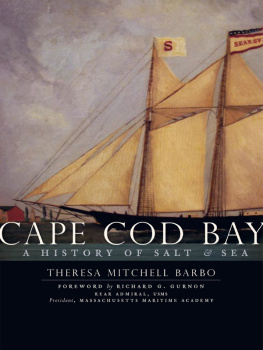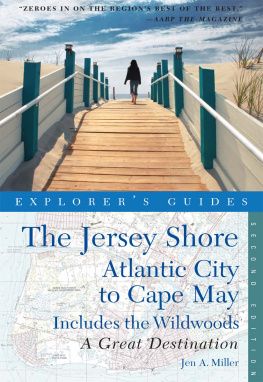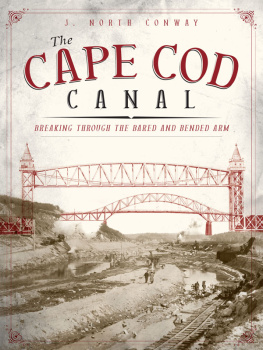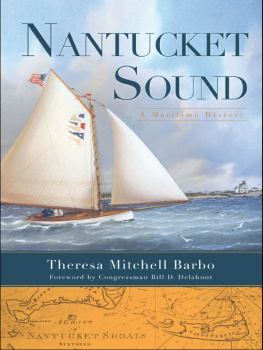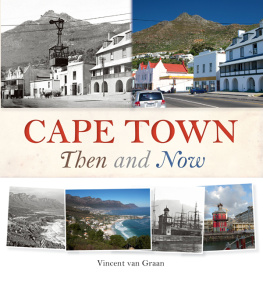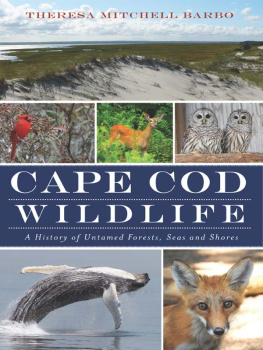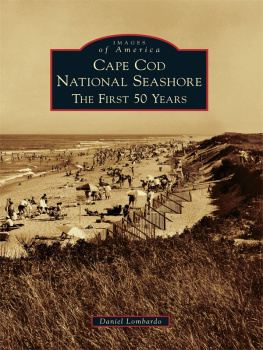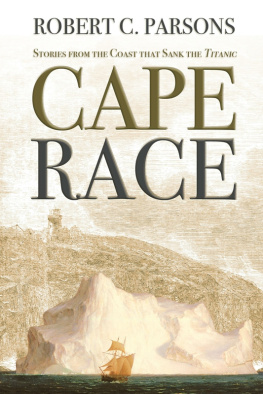

Published by The History Press
Charleston, SC 29403
www.historypress.net
Copyright 2008 by Theresa Mitchell Barbo
All rights reserved
Cover image: Searsville, a vessel constructed at the Shiverick Shipyards in East Dennis. Artist unknown, courtesy of the Dennis Historical Society.
Cover design by Natasha Momberger
First published 2008
e-book edition 2013
ISBN 978.1.62584.462.0
Library of Congress Cataloging-in-Publication Data
Barbo, Theresa M.
Cape Cod Bay : a history of salt and sea / Theresa Mitchell Barbo.
p. cm.
Includes bibliographical references and index.
print edition ISBN 978-1-59629-502-5
1. Cape Cod Bay (Mass.)--History. 2. Natural history--Massaschusetts--Cape Cod Bay. 3. Cape Cod Bay (Mass.)--Environmental conditions. 4. Human ecology--Massaschusetts--Cape Cod Bay. I. Title.
F72.C3B215 2008
551.461345--dc22
2008029857
Notice: The information in this book is true and complete to the best of our knowledge. It is offered without guarantee on the part of the author or The History Press. The author and The History Press disclaim all liability in connection with the use of this book.
All rights reserved. No part of this book may be reproduced or transmitted in any form whatsoever without prior written permission from the publisher except in the case of brief quotations embodied in critical articles and reviews.
For Dan
CONTENTS
FOREWORD
The sea surrounds us. Living on Cape Cod, it is both a physical fact and a way of life. When the Cape Cod Canal was opened in 1914the same year as the more famous Panama Canalit changed this sandy accumulation of glacially deposited debris from a peninsula that stuck out into the North Atlantic into an island stitched to the Massachusetts mainland by three fragile steel bridges. As Italy can be compared to the shape of a boot, Cape Cod looks from the air like the crooked arm of a bodybuilder, striking a pose that displays his biceps. The curved fist of Provincetown is at one end and the shoulder seam of the Cape Cod Canal is at the other. Contained within the protection of this arm is the treasure of Cape Cod Bay.
The early inhabitants of this narrow land were dependent on the bay for their very survival, but the cool Atlantic waters trapped by the crooked arm provided natural air conditioning and pleasant surroundings that offered relief from the hot summers of inland regions. When Europeans stumbled into Cape Cod Bay, they qualified as the first touristswide-eyed and weary, somewhat lost and irritating to the natives with their customs, accents and attitudes. Like their predecessors, they found the bay alive with marine animals and, as one Englishman was rumored to have said, Codfish so thick one can walk on their backs. The settlers rejoiced at their wondrous discovery.
Founded in 1891 in Boston, the Massachusetts Maritime Academy predates the Cape Cod Canal, but the cadets of the academy have always lived by and loved Cape Cod Bay. Academy training ships traversed the bay twice each year as the cadets set sail on their annual sea term semester, excited to be out at sea on the outbound legand even more excited to be heading home on the return voyage. For the first fifty years of the academys history, the training ships were sailing vessels with auxiliary steam power and the young boys aboard would scurry to the mast tops to catch the last (or first) sight of home. They were in training to become captains or chief engineers on the new steam-powered freighters and passenger liners of their day. The work was hard and the life was Spartan, but the rewards, both in responsibility and remuneration, were great.
For the last fifty years, the academy training ships have been huge steam-powered former freighters, now converted to floating college campuses with classrooms, dormitory and messing capability to take over five hundred young male and female students on a voyage of college education and discovery unlike any other. In a practice unchanged for over 117 years, those training ships, filled with the future, get underway. They now pass beneath the three latticework, Erector Set bridges that span the Cape Cod Canal and leave their temporary bright white scratch across the deep blue surface of Cape Cod Bay. And within minutes the bay erases the mark and returns to her former glory.
The sea surrounds usand makes us glad.
Rick Gurnon
Rear Admiral, USMS
President, MMA
PREFACE
A historian should yield himself to his subject, become immersed in the place and period of his choice, standing apart from it now and then for a fresh view.
Samuel Eliot Morison (18871976), U.S. historian noted for his works on American and maritime history
The idea for this book arrived in bits and pieces in my imagination after years of independent historical research and my work in the field of contemporary marine public policy. It was sculpted to examine the depth and range of American society over several hundred years, and related cultures, as they pertain to the coastal embrace of Cape Cod Bay and how people used this ecosystem for food, economic sustenance, travel, warfare and other human actions. Where I could, I used primary materials for research, but I also leaned on secondary sources such as books. The last chapter examines contemporary issues that hinge yesteryear to tomorrowtopics future historians will analyze, from environmental public policy to cultural preservation.
This book is intended as a maritime history of Cape Cod Bay, not as a comprehensive history of this region of Massachusetts. I focus on select topics whose past engages the bay, including a review of the Pilgrim settlement in Plymouth and Native American relations with European settlers.
To that end, I am grateful to Saunders Robinson at The History Press, who supported the vision and concept of the book throughout the creative, research and composition processes, and Im thankful for her faith, assistance and belief that this project could enrich and educate readers. Others at The History Press to whom I am grateful include Hilary McCullough, senior editor, who combed through the manuscript in her usual precise fashion, and Katie Parry and Dani McGrath, specialists in public relations and marketing, respectively, all of whom have been supportive with this project, and with my three preceding books.
I am indebted to the Dennis Historical Society, which granted permission for The History Press to use its oil painting depicting the Searsville for the cover of this book. And to Phyllis Horton, who provided information about the Searsville.
Mary Sicchio, special collections librarian at the William Brewster Nickerson Memorial Room at Cape Cod Community College, provided images for this book and shared documents in the research phase. Marcella Curry, a reference librarian at Sturgis Library, steered me in the right direction on several occasions. Karin Goldstein, the reference librarian at Plimoth Plantation, assisted me in locating primary and secondary sources. Ria Convery, communications director at the Massachusetts Water Resource Authority, provided a graphic for this book. I am grateful to Steve McKenna of the Massachusetts Office of Coastal Zone Management (MA CZM) for the use of a map detailing Cape Cod Bay.
Duncan Oliver, a retired high school principal, historian/scholar and former president of the Historical Society of Old Yarmouth, shared his notes on Yarmouths history, which I found valuable and instructive. Additionally, I relied on Duncans book on shore whaling, composed with the late Jack Braginton-Smith. Bonnie and Stanley Snow of Orleans shared images from their extensive collection that were used in this book. Maureen Rukstalis of the Historical Society of Old Yarmouth also provided photographs. Historian Stauffer Miller shared his research on Cape Cod Civil War sea captains. Historians Jim Coogan of Sandwich and Mary Sicchio of Falmouth graciously served as readers. I am always thankful for extra sets of sharp eyes.
Next page
